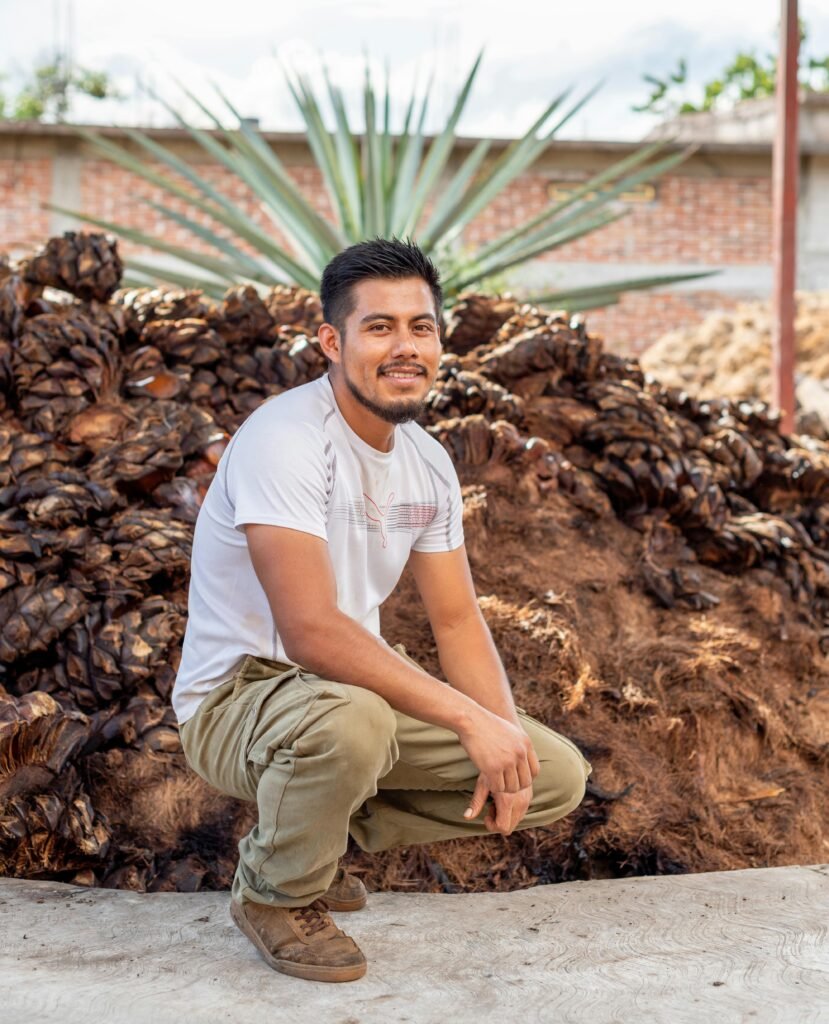Imagine having the perfect hair weave that not only looks flawless but feels incredibly soft and natural. With advanced techniques in hair weave manufacturing, this dream can become a reality. This article explores how these innovative techniques are revolutionizing the industry, allowing for a higher level of quality and craftsmanship. From improved weaving methods to the use of premium materials, the future of hair weaves is brighter than ever. So, whether you’re a hair enthusiast or simply curious about the latest advancements in beauty, read on to discover how advanced techniques are enhancing the quality of hair weaves.

This image is property of images.pexels.com.
Introduction to Hair Weave Manufacturing
Hair weaving is the process of integrating additional hair strands into natural hair, creating a fuller and thicker appearance. This technique is widely used by individuals who desire to enhance their hair volume, length, or style. Hair weave manufacturing plays a crucial role in providing high-quality hair extensions that meet the needs and preferences of customers around the world.
Definition of Hair Weaving
Hair weaving involves attaching additional hair, such as human or synthetic hair, to the natural hair using various techniques. The additional hair is seamlessly blended with the existing hair, giving the appearance of voluminous and natural-looking hair. This process can be done in a salon by a professional hairdresser or at home with the help of DIY hair weave kits.
History of Hair Weaving
The concept of hair weaving can be traced back to ancient times, where it was practiced in different cultures across the globe. In ancient Egypt, wigs and hair extensions were commonly used to symbolize social status and beauty. Similarly, hair extensions made from human hair and dyed with natural dyes were popular in ancient Rome and Greece. Throughout history, hair weaving techniques have evolved and adapted to changing fashion trends and cultural preferences.

This image is property of images.pexels.com.
Importance of Quality in Hair Weave Manufacturing
Quality is paramount in hair weave manufacturing as it directly impacts the overall appearance and longevity of the hair extensions. High-quality hair weaves should closely resemble natural hair and seamlessly integrate with the customer’s existing hair. By investing in advanced techniques and using top-quality materials, manufacturers can ensure customer satisfaction and build a reputable brand in the industry.
Traditional Hair Weave Manufacturing Techniques
Traditional hair weave manufacturing techniques include hand-tying, machine-sewn, and drawstring methods. These techniques have been practiced for decades and have their unique advantages and limitations.
Hand-tying Technique
The hand-tying technique involves meticulously tying individual hair strands to a base material, such as a weft or lace. Skilled artisans manually tie each hair strand, ensuring even distribution and a natural appearance. This technique requires exceptional attention to detail and is time-consuming. However, it offers a high level of customization and creates a seamless integration between the natural and additional hair.
Machine-Sewn Technique
The machine-sewn technique involves using specialized machines to sew hair strands onto a weft or lace. This technique allows for faster production and greater consistency in hair distribution. However, it may lack the meticulous customization possible with the hand-tying technique.
Drawstring Technique
The drawstring technique involves attaching a weft of hair to a small drawstring or elastic band, which can be adjusted to fit the customer’s head securely. While this technique offers ease of use and versatility, it may not provide the same level of stability and durability as other methods.
Challenges in Traditional Techniques
While traditional hair weaving techniques have been widely used, they are not without their challenges. These include inconsistencies in hair distribution, weft durability issues, and limited customization options.
Inconsistencies in Hair Distribution
In traditional techniques, achieving consistent hair distribution throughout the hair weave can be challenging. This can result in an uneven appearance and reduced hair density in certain areas. Manufacturers often need to invest significant time and effort into ensuring consistent hair distribution in each hair bundle.
Weft Durability Issues
Traditional hair weave techniques may face issues with weft durability. The weft, which holds the hair strands together, can weaken over time, leading to hair shedding and reduced longevity of the hair extensions. This could result in customer dissatisfaction and the need for frequent replacements.
Limited Customization Options
Traditional techniques offer limited customization options when it comes to color, texture, and style. Customers may struggle to find the exact match for their natural hair or desired look. This limitation could lead to compromises and dissatisfaction among customers.

This image is property of images.pexels.com.
Emerging Advanced Techniques
To address the challenges faced by traditional techniques, various advanced hair weaving techniques have emerged in recent years. These techniques leverage modern technology and innovative approaches to enhance the quality and customization options of hair weaves.
Double Weft Technique
The double weft technique involves attaching two layers of wefted hair together, resulting in a thicker and more voluminous hair bundle. This technique not only increases hair density but also improves the overall appearance and durability of the hair weave. The double weft technique offers a more natural look with increased fullness, giving customers the desired luscious and voluminous hair.
Lace Closure and Frontal Technique
The lace closure and frontal technique involves using a lace closure or frontal piece to create a natural-looking hairline. The closure or frontal is made from a thin lace material that blends seamlessly with the customer’s scalp. This technique offers versatility in styling, allowing customers to part their hair in any direction without revealing the hair weave.
3D Printing for Customization
3D printing technology has revolutionized the hair weave manufacturing industry, allowing for precise and tailored customization. Manufacturers can now use 3D printers to create customized wefts with intricate designs, patterns, and color blends. This technology eliminates the limitations of traditional methods, enabling customers to achieve the exact look they desire and ensuring a seamless integration with their natural hair.
Benefits of Advanced Techniques
Advanced techniques bring significant benefits to both manufacturers and customers, enhancing the quality of hair weave manufacturing.
Improved Hair Distribution and Density
With advanced techniques, manufacturers can achieve consistent and even hair distribution, resulting in a more natural and fuller appearance. The uniform density across the hair weave creates a seamless blend with the customer’s natural hair, giving a realistic and desirable outcome.
Enhanced Durability and Longevity
Advanced techniques, such as the double weft method, enhance the durability and longevity of hair weaves. The strengthened weft reduces the chances of hair shedding and ensures the hair extensions remain intact for a longer period. This increased durability translates into cost-effectiveness for customers and reduces the need for frequent replacements.
Wider Range of Customization Options
Advanced techniques open up a wide range of customization options for customers in terms of color, texture, and style. With the lace closure and frontal technique, for instance, customers can choose a hairline that matches their natural hairline, enhancing the overall look and ensuring a seamless integration. 3D printing allows manufacturers to create unique and personalized designs, giving customers the opportunity to express their individuality and style through their hair.
Double Weft Technique
The double weft technique has gained popularity in recent years due to its numerous advantages over traditional methods.
Definition and Process
The double weft technique involves sewing two layers of wefted hair together. This creates a hair bundle that is twice as thick as a regular weft, providing a fuller and more voluminous look. The process typically involves securing the two wefts with a sewing machine or hand-sewing, ensuring a strong and durable connection.
Advantages Over Traditional Methods
The double weft technique offers several advantages over traditional techniques. By increasing the hair density, it creates a more realistic and natural-looking result. The additional volume and fullness give customers the confidence and satisfaction of having a glamorous and lush hair appearance. Moreover, the double weft’s enhanced durability ensures minimal shedding and longer-lasting hair extensions.
Popularity and Consumer Preference
The double weft technique has gained considerable popularity among customers seeking luxurious and voluminous hair. Its ability to create a seamless blend with natural hair while providing a fuller and thicker look makes it a preferred choice for many. Customers appreciate the high-quality results achieved through the double weft technique, making it a desirable option in the hair weave market.
Lace Closure and Frontal Technique
The lace closure and frontal technique has revolutionized the way hair weaves are applied, offering a more natural-looking hairline and versatile styling options.
Definition and Application
The lace closure and frontal technique involve attaching a lace closure or frontal piece to create a realistic and natural hairline. The lace material used blends seamlessly with the customer’s scalp, giving an illusion of hair growing directly from the scalp. This technique is applied at the front of the hairline, allowing for various parting styles and ensuring a flawless and undetectable hair extension installation.
Natural Hairline Appearance
One of the main advantages of the lace closure and frontal technique is the creation of a natural hairline. The thin lace material mimics the appearance of the scalp, making it difficult to discern where the natural hair ends and the hair weave begins. This natural hairline appearance instills confidence in the wearer and creates a seamless integration between their natural hair and the hair weave.
Versatility in Styling
The lace closure and frontal technique offer unparalleled versatility in styling. Customers can part their hair in any direction, including center, side, or even off-center partings, without revealing the hair weave. This opens up endless styling possibilities, allowing individuals to experiment with different looks and create hairstyles that suit their personal preference and fashion choices.
3D Printing for Customization
The emergence of 3D printing technology has transformed the hair weave manufacturing industry, revolutionizing the way customization is achieved.
Application of 3D Printing Technology
3D printing technology enables manufacturers to customize hair weaves to a high degree of precision. By using specialized software, manufacturers can design and create intricate patterns, color blends, and textures. These designs are then printed using a 3D printer, resulting in highly detailed and tailored hair weaves.
Tailored and Precise Customization
3D printing offers customers the ability to tailor the hair weave to their exact preferences. Whether it’s a specific color blend, a unique pattern, or a specific texture, 3D printing technology can bring these customization requests to life. This precise customization ensures that customers receive a hair weave that matches their vision and enhances their individuality.
Innovative Designs and Patterns
With 3D printing, manufacturers can push the boundaries of hair weave designs, creating innovative and intricate patterns that were previously impossible to achieve. Whether it’s geometric shapes, floral motifs, or abstract designs, 3D printing allows for unlimited creativity. This innovation opens up new possibilities for customers to showcase their personal style and make a statement with their hair.
Implementing Advanced Techniques
To fully embrace the benefits of advanced techniques in hair weave manufacturing, manufacturers need to invest in modern machinery and equipment, provide training and upskilling opportunities for their workforce, and collaborate with technology providers.
Investing in Modern Machinery and Equipment
To implement advanced techniques effectively, manufacturers must invest in state-of-the-art machinery and equipment. This includes specialized sewing machines for the double weft technique, 3D printers for customization, and advanced digital tools for lace closure and frontal application. By upgrading their equipment, manufacturers can ensure precision, efficiency, and consistent high-quality results.
Training and Upskilling of Workforce
Manufacturers need to provide training and upskilling programs for their workforce to effectively utilize advanced techniques. Skilled artisans can be trained in the intricacies of the double weft technique, lace closure and frontal application, and the use of 3D printing technology. By equipping their employees with the necessary skills and knowledge, manufacturers can ensure the successful implementation of advanced techniques and maintain a competitive edge in the market.
Collaboration with Technology Providers
Collaborating with technology providers specializing in advanced techniques is crucial for manufacturers. These providers can offer guidance and expertise in areas such as 3D printing, software development, and machinery optimization. By partnering with technology providers, manufacturers can stay ahead of industry trends, access cutting-edge technology, and maintain a strong position in the evolving hair weave market.
Conclusion
Embracing advanced techniques in hair weave manufacturing is essential for enhancing quality and customer satisfaction. Through techniques such as the double weft method, lace closure and frontal application, and the incorporation of 3D printing technology, manufacturers can achieve consistent hair distribution, enhanced durability, and a wider range of customization options. By investing in modern machinery, providing training to their workforce, and collaborating with technology providers, manufacturers can adapt to evolving customer demands and stay at the forefront of the hair weave industry. The future holds even greater advancements, and manufacturers who actively embrace these technologies are poised to thrive in this ever-changing market.
